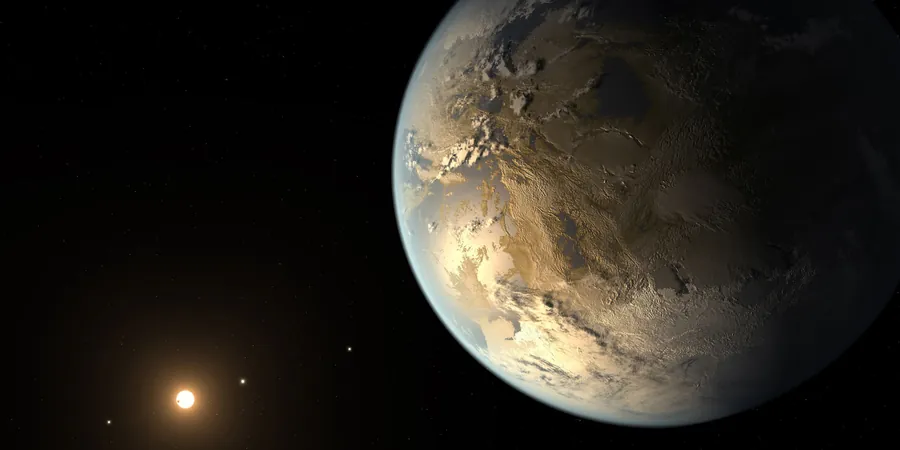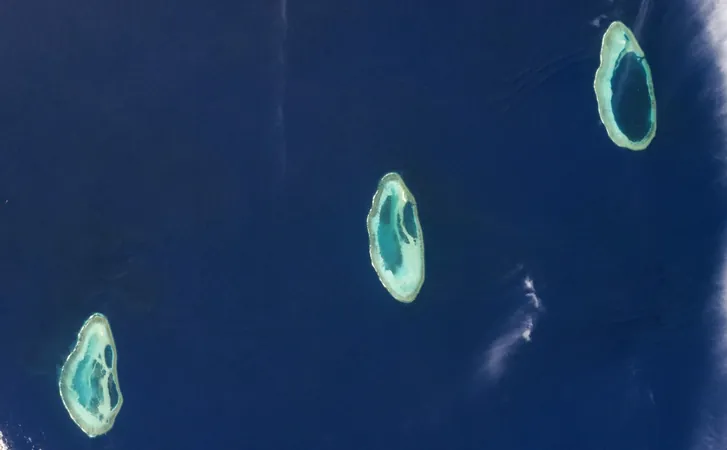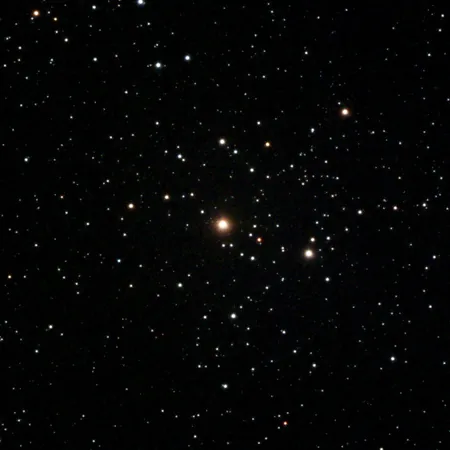
Discovering Habitable Worlds: Is Your Planet Safe?
2024-11-05
Author: Siti
Discovering Habitable Worlds: Is Your Planet Safe?
When exploring the cosmos for exoplanets capable of supporting life, scientists often focus on a crucial region known as the habitable zone—the area around a star where conditions may be just right to allow liquid water to exist on a planet's surface. This concept is a promising initial indicator for identifying potential life-sustaining worlds among the thousands of exoplanets detected.
But recent studies reveal that the quest for habitability is far more complex than just identifying a favorable location. In environments densely populated with stars, planets in their habitable zones face additional dangers—such as stellar encounters and catastrophic events like supernova explosions—which could eject these planets from their solar systems or even ravage their atmospheres.
A groundbreaking new study, aptly titled “The 10 pc Neighborhood of Habitable Zone Exoplanetary Systems: Threat Assessment from Stellar Encounters & Supernovae,” delves into these risks. Conducted by a team of researchers led by Tisyagupta Pyne from the Integrated Science Education and Research Centre at Visva-Bharati University in India, the study has been accepted for publication in *The Astronomical Journal*.
The research scrutinizes a region spanning 10 parsecs around 84 solar systems known to harbor habitable zone exoplanets. Notably, some of these systems face risks from external stellar forces. How do these factors impact the prospects for life, and what adjustments must we make to our definition of the habitable zone?
According to the authors, out of over 4,500 stars hosting exoplanets, more than 140 are confirmed to have planets residing in habitable zones. They thoroughly evaluate the potential threats arising from these stellar environments.
Currently, over 150 confirmed exoplanets exist within identified habitable zones, and as exoplanet research evolves, scientists are refining their understanding of what constitutes a habitable zone. Two key terms have emerged: the "optimistic habitable zone" and the "conservative habitable zone.” The optimistic definition refers to regions that might have supported water similar to that of early Mars or recent conditions on Venus. Meanwhile, the conservative definition refers to a tighter boundary where conditions are more favorable for liquid water to persist.
Recent findings suggest that the environment surrounding potentially habitable exoplanets plays an equally vital role in supporting long-term habitability. Researchers created two metrics to assess the stellar environments: the Solar Similarity Index (SSI) and the Neighborhood Similarity Index (NSI). The SSI compares the properties of our solar system to those of other habitable zone systems, while the NSI assesses the local stellar environments around 10 parsecs in relation to other systems.
The study reveals that while the concept of habitable zones remains essential, the broader stellar environment significantly influences the longevity and maintenance of conditions suitable for life. Catastrophic events—like supernovae or close encounters with other stars—have been shown to be detrimental to the evolution of complex life forms, effectively threatening the sustained habitability of exoplanets.
Radiation from such events could wreak havoc on Earth-like atmospheres. For instance, a supernova explosion occurring near Earth could obliterate life as we know it, and while ancient supernovae left evidence of their effects on our planet, none were close enough to endanger our atmosphere.
Focusing on the detrimental effects of supernovae, the researchers particularly identified high-mass stars capable of explosive death, studying their proximity to various habitable zone systems. They discovered two high-mass stars within 10 parsecs of systems TOI-1227 and HD 48265, posing potential supernova threats.
Additionally, the study identified that the HD 165155 solar system faces a 1 in 5 billion year risk of stellar flyby, which could potentially eject planets from their habitable zones, creating an environment hostile to life.
Although the NSI found that many habitable zone systems share similarities with the solar neighborhood, the varied characteristics of exoplanetary hosts lead to a wide range of values in the SSI, further complicating our understanding of habitability.
The ramifications of supernova explosions on potential life are dire. Intense initial radiation could devastate any surface life, while subsequent radiation could strip atmospheres or even mutate biological DNA. Even planets far removed from the explosion could experience climate alterations, leading to extinction events. Many scientists suggest that planets located within 50 light-years of a supernova are at considerable risk.
Interestingly, the study discusses rogue planets, or free-floating planets (FPPs), which may exist in states of solitude due to being ejected by close encounters with other stars. The number of these planets in our Milky Way galaxy could be staggering, potentially in the billions. Future projects like the Nancy Grace Roman Space Telescope aim to unveil further details about these wandering worlds.
In conclusion, the path to understanding habitability reveals that our own planet may be an exceptional case. Life may arise in various habitable zones, but it might struggle to endure due to the myriad of cosmic threats. While we cannot detect all influencing factors from afar, gaining insight into the stellar environments where these exoplanets reside is crucial. The findings of this research mark an important advancement in our exploration of life's potential beyond Earth.



 Brasil (PT)
Brasil (PT)
 Canada (EN)
Canada (EN)
 Chile (ES)
Chile (ES)
 Česko (CS)
Česko (CS)
 대한민국 (KO)
대한민국 (KO)
 España (ES)
España (ES)
 France (FR)
France (FR)
 Hong Kong (EN)
Hong Kong (EN)
 Italia (IT)
Italia (IT)
 日本 (JA)
日本 (JA)
 Magyarország (HU)
Magyarország (HU)
 Norge (NO)
Norge (NO)
 Polska (PL)
Polska (PL)
 Schweiz (DE)
Schweiz (DE)
 Singapore (EN)
Singapore (EN)
 Sverige (SV)
Sverige (SV)
 Suomi (FI)
Suomi (FI)
 Türkiye (TR)
Türkiye (TR)
 الإمارات العربية المتحدة (AR)
الإمارات العربية المتحدة (AR)